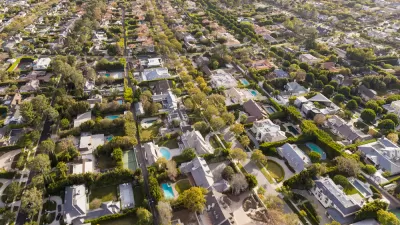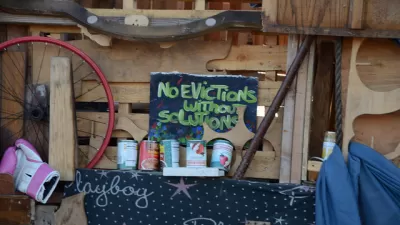Mark Vallianatos argues Los Angeles is still contending with the legacy 1920 era land use restrictions built on racist, exclusionary zoning policies, the remnants of which aren't worth saving.

Politicians fighting for exclusionary zoning that only allows single family homes should consider where these zoning laws come from, Mark Vallianatos argues in the LA Times.
"State Sen. Scott Wiener (D-San Francisco) recently introduced a bill that would help change that. SB 827 would relax some local density and height restrictions and parking requirements on land near busy transit stops,"Mark Vallianatos, writes for the Los Angeles Times. This could make a big difference in a city where almost half of the land is zoned exclusively for single family housing.
L.A.'s Mayor and City Council came out against the measure citing a change in the city's character, Mayor Garcetti suggested that neighborhoods with 2-3 flats and apartment buildings wouldn't "look right" in LA. Vallianatos finds that line of reasoning unconvincing. Citing the charm of Northeast L.A. with "the mix of duplexes, bungalow courts, single-family houses, dingbat apartments and townhome-style small-lot subdivisions."
Worse, the exclusionary zoning laws put in place in LA in 1921 were part of a movement started in the south to codify segregation. When the courts made it illegal to ban races and religious groups from neighborhoods, the movement used single-family housing zoning rules as an end-around to circumvent those rules. These land use rules have constrained housing in the city ever since, and Vallianatos argues, "In a region with a housing shortage and homelessness crisis, all homes are good homes."
FULL STORY: L.A.'s land use rules were born out of racism and segregation. They're not worth fighting for

Alabama: Trump Terminates Settlements for Black Communities Harmed By Raw Sewage
Trump deemed the landmark civil rights agreement “illegal DEI and environmental justice policy.”

Study: Maui’s Plan to Convert Vacation Rentals to Long-Term Housing Could Cause Nearly $1 Billion Economic Loss
The plan would reduce visitor accommodation by 25% resulting in 1,900 jobs lost.

Planetizen Federal Action Tracker
A weekly monitor of how Trump’s orders and actions are impacting planners and planning in America.

Waymo Gets Permission to Map SF’s Market Street
If allowed to operate on the traffic-restricted street, Waymo’s autonomous taxis would have a leg up over ride-hailing competitors — and counter the city’s efforts to grow bike and pedestrian on the thoroughfare.

Parklet Symposium Highlights the Success of Shared Spaces
Parklets got a boost during the Covid-19 pandemic, when the concept was translated to outdoor dining programs that offered restaurants a lifeline during the shutdown.

Federal Homelessness Agency Places Entire Staff on Leave
The U.S. Interagency Council on Homelessness is the only federal agency dedicated to preventing and ending homelessness.
Urban Design for Planners 1: Software Tools
This six-course series explores essential urban design concepts using open source software and equips planners with the tools they need to participate fully in the urban design process.
Planning for Universal Design
Learn the tools for implementing Universal Design in planning regulations.
Caltrans
Smith Gee Studio
Institute for Housing and Urban Development Studies (IHS)
City of Grandview
Harvard GSD Executive Education
Toledo-Lucas County Plan Commissions
Salt Lake City
NYU Wagner Graduate School of Public Service





























